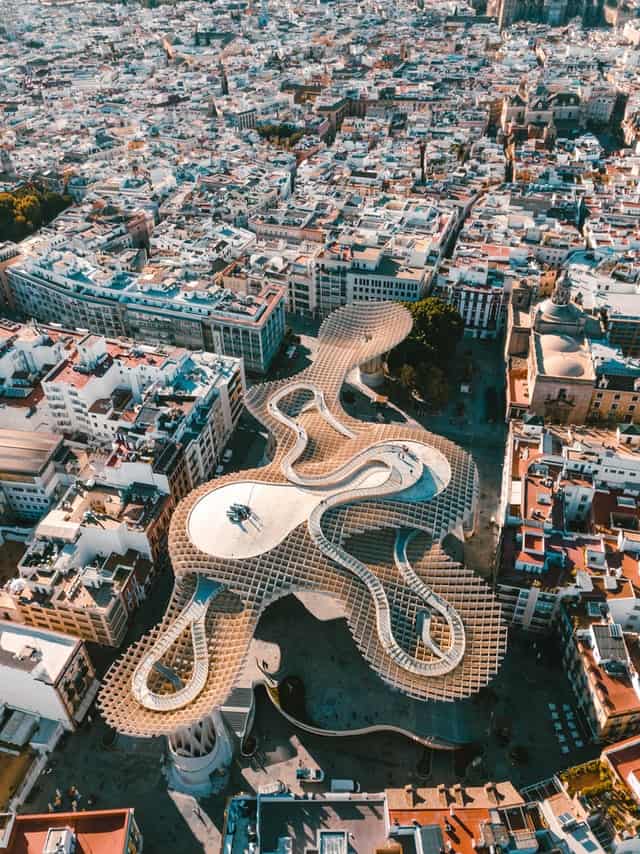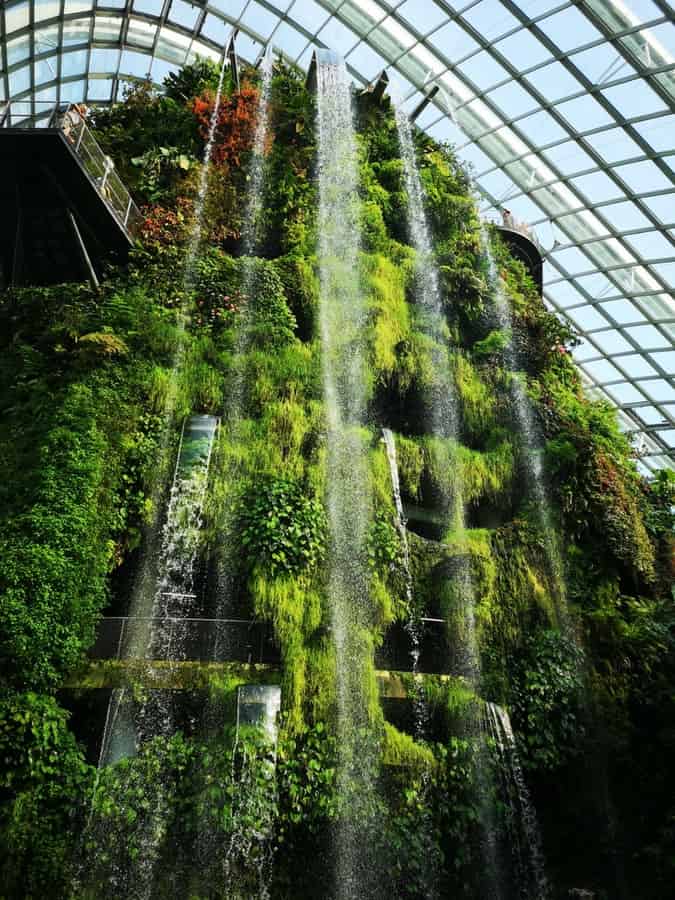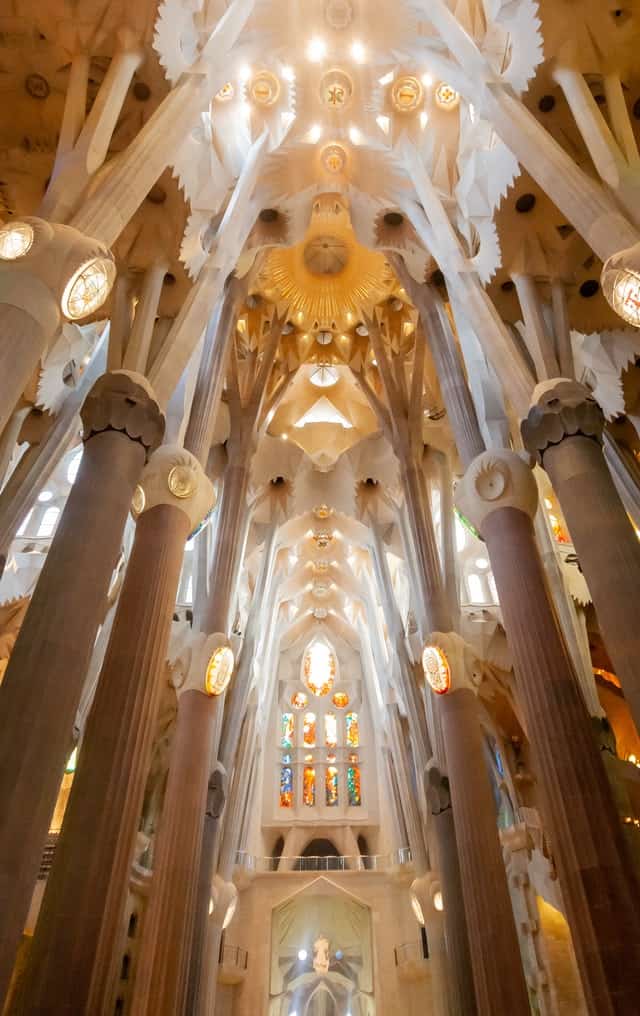Biomimicry in Architecture: Nature to Architecture
Have you heard the saying “Nature works in mysterious ways”? Nature in itself has an adaptive system that helps it to cope up with environmental changes. Nature can provide us solutions to a lot of our everyday issues. Inspirations from nature have given us answers for complex issues in product design, medicine, science, and technology. This is true for architecture as well! A deep look at the elements and systems of nature can help us derive solutions to our design and planning issues. This art of adapting concepts of nature into built form is known as biomimicry in architecture.
With growing time and technology, we have realized that being associated with nature is the most beneficial to us. Therefore, getting to know the potential of biomimicry and embracing it is now vital. Architecturally, the more nature-oriented we are, the more feasible becomes our design. Biomimicry adds a sense of sustainability as well as creativity to design.

Understanding Biomimicry in Architecture
The word “Biomimicry” originates from the Greek term “bios” and “mimesis”. While “bios” means “life”, “mimesis” translates to “imitate”. Thus, biomimicry in architecture is imitating the live nature to achieve sustainable solutions. This nature-inspired innovation has led to the amalgamation of design and nature. Human designed solutions at times are crude. These solutions solve the problem for time being, however; do not target the core of the issues.
Peter Niewiarowski, a biologist at the Biomimicry Research and Innovation Center once said “The way biological systems solve problems is pretty different from the way engineered systems solve problems”. Hence, we can say that the inspirations from nature are more feasible and trustworthy. Moreover, Biomimicry has given architecture an empathetic edge and a process to solve the design challenges in an environment-friendly manner. Besides, biomimicry architecture has raised awareness about the well-being of all the lives on our planet. Therefore, this helps us inculcate wisdom in our designs and heal the planet through built forms.

Role of Biomimicry in Everyday Architecture
The role of biomimicry in architecture is not limited to mimicking nature into build forms. Its scope is much more advanced and involves designing an alternate approach. In order to develop this alternative approach, we will have to first understand the concept of biomimicry better.
De-stressing the environment
The climate is facing the ill effects of our interventions into nature. Moreover, construction has also led to deforestation and the destruction of natural habitats. This is where biomimicry in architecture has an important role to play. We can try to adapt solutions that have already been tested by the natural habitat. Thus, saving our planet and its ecology.
Generosity in Design
Mass construction has led to the degradation of air, water, and soil. Nature showcases us the use of passive energy systems and change of functions to adapt to the existing conditions. The various examples of biomimicry in architecture help us understand the use of circularity, sustainability and regenerative design. Hence, this makes us well equipped to design generously for all and thereby create an environment that is conductive of life, just like nature.

Catalysing the process of sustainability
There has been a lot of research into understanding how we have affected nature. But there are very few technologies that help us to reverse these adverse effects. We can say our R&D has been weak in preventing the destruction of ecology. On the other hand, we can see how nature and its forms adapt to the changing climates and create a beautiful coexistence. Thus, biomimicry in architecture can help to speed up the process of delivering sustainable designs. We do not have to reinvent things, we only have to observe the strategies of nature and incorporate them into our design processes.
Changing the perception
Innovation should not be limited to creating new things. We can say that biomimicry architecture implies that innovation is a new perception of old systems. Biomimicry preaches the wisdom that we need. Apart from the creation of new things it also helps us to focus on the existing systems with empathy and wisdom so as to conserve our heritage.
Examples of Biomimicry in Architecture:
Sagrada Familia
Location: Barcelona, Spain
Architect/ Facade Consultants: Antoni Gaudí
Antoni Gaudi‘s one of the precious legacies is The Sagrada Familia. It is one of the most ambitious projects by Gaudi. The construction of this architectural marvel started in 1882. However, it is yet planned for completion by 2026, 100 years after Gaudi’s death. Gaudi drew the concept of its interiors from a forest. Therefore, the structure of internal columns mimic trees and support the roof. The roof has skylights with green and gold glass to reflect light. Hence, The biomimicry in architecture here creates the visual fabric of a forest with the help of the tree-inspired forms, the glass windows, and the infused sunlight from the stained glass glazing.
The Algae House
Location: Hamburg, Germany
Architect / Facade Consultants: Arup Deutschland GmbH
Also known as The BIQ House, this unusual building located in Hamburg is Germany’s response to biomimicry in architecture. The structure here incorporates the living matter of microalgae into its design in a very unique manner. The focus feature here is the green-hued panels largely forming the surface of the facade. These transparent green panels house the networks of microalgae, thereby controlling the light into the interiors and also providing natural shade where needed. The Alage House is the first example of a “bioreactor facade” in the whole world.
The design has provisions to supply nutrients and CO2 to the growing algae produced within the transparent shell. Therefore, this helps to achieve a natural and cost-effective sun filter and helps in regulating the inner climate in summers. Whereas, the winters in Hamburg are pretty dry and grey with no natural light for a long period of the day. In this case, the algae stop propagating. As a result, the facade screens become transparent, allowing better-lit spaces in the interiors. Moreover, when considerate amounts of algae growth are there, it also aids the production of biogas. Biogas in turn supplies the building with necessary clean energy.
The Gherkin, London
Location: London
Architect / Facade Consultants: Sir Norman Foster
The Gherkin is Norman Foster’s most ambitious project in the genre of biomimicry architecture. The design here mimics the form and structure of the Venus Flower Basket Sponge. To attain stability, the exoskeleton of the structure is designed on the lines of the Sponge. Moreover, the hollow basket-shaped structure helps in the filtration of water for nutrients. The design here is also based on the concept of an open floor plan. This facilitates better resistance to winds loads and natural ventilation throughout all floors. Moreover, the structural elements of the building connect at different angles. It gives rise to a column-free interior space.
Eastgate Center, Zimbabwe
Location: Harare, Zimbabwe
Architect / Facade Consultants: Mick Pearce
This is probably the ultimate example of biomimicry architecture. The idea of The Eastgate Cente stuck Ar. Pearce while watching termites construct their nests. Taking inspiration from the insects, who use very limited resources to create ventilated mounds and permeate them with holes over the surface, Pearce chalked out the design of this building with holes on the facade that acted as the building skin.
This led to the thought process of reducing dependency on mechanical systems for ventilation and air conditioning. The Eastgate building was based on the concept of using less energy and maximizing the use of natural ventilation. As a result, the building skin absorbs warm air from the exterior during the day. The heat from the air gets absorbed and cool air is pumped during the day. At night, the heat absorbed from the warm air is used for heating. Hence, this leads to a comfortable cool, and warm macroclimate inside the building.




